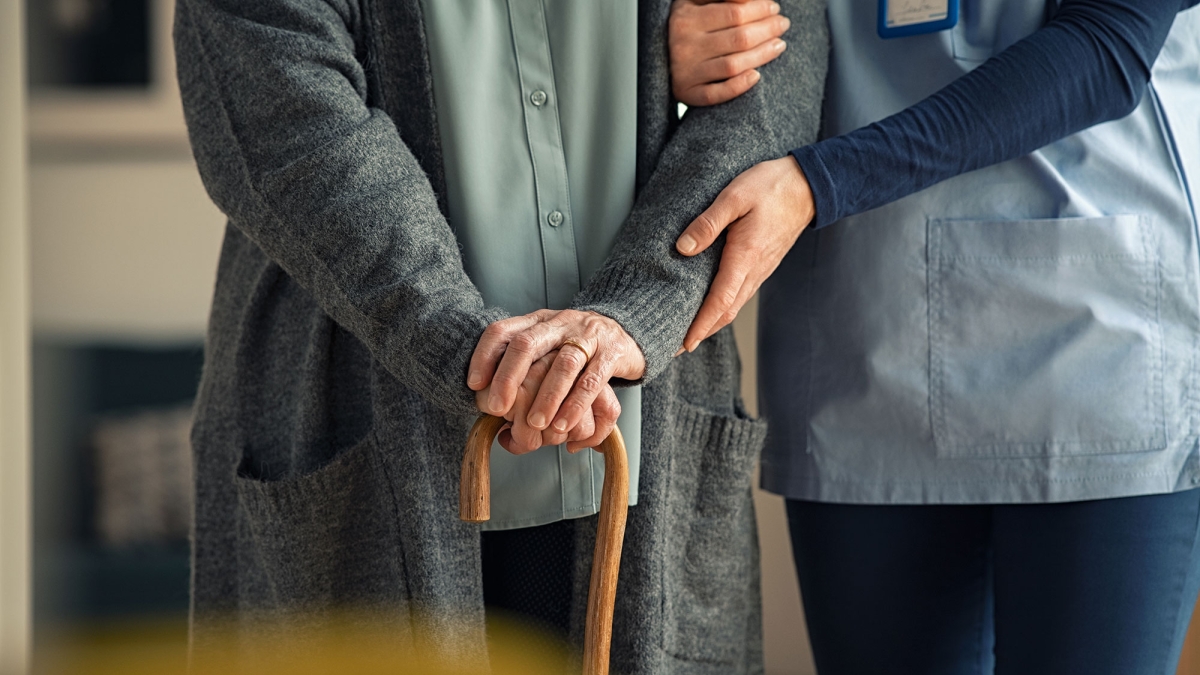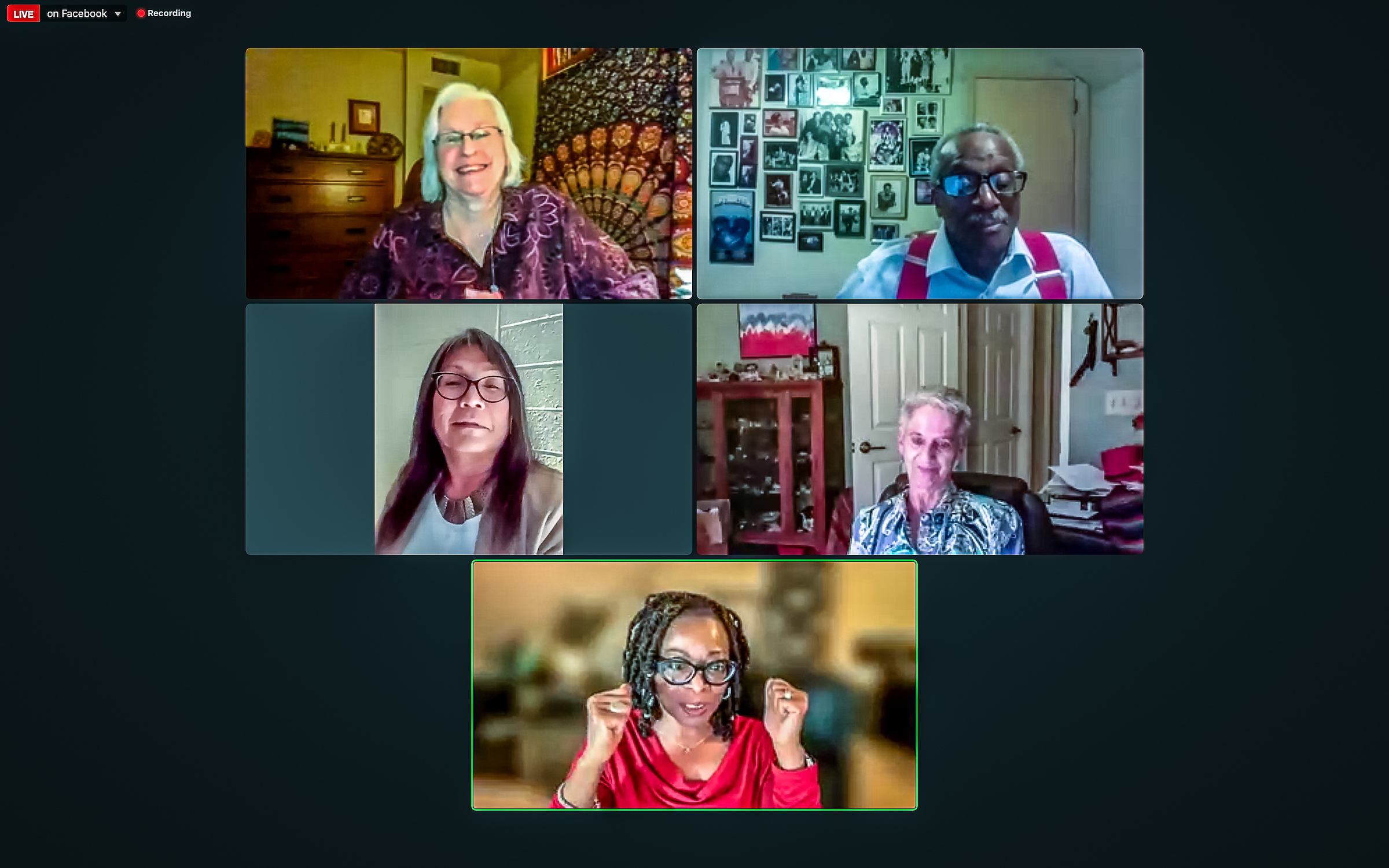Getting old has its perks and perils. People are mostly kind and respectful to their elders, but that doesn’t keep older adults from being undervalued citizens of their communities.
And though aging can be a tough experience for anyone, what obstacles arise for those who come up against multiple marginalized identities? How does one get the care they need or the respect that they deserve if larger society dismisses their very existence? How does what Kimberly CrenshawCrenshaw is an American civil rights advocate and a leading scholar of critical race theory who coined the term intersectionality. refers to as “intersectionality” complicate the aging experience?
"Aging and 2SLGBTQIA+This term stands for two spirit, lesbian, gay, bisexual, transexual, queer/questioning, intersex, asexual and other identities." was the subject of a Feb. 1 Project Humanities livestream event.
“Project Humanities is continually looking at diversity, inclusion and equity through a lens of humanity and justice for all. With so much social negativity about aging and getting old, it is imperative that community conversations acknowledge the multiple, intersectional marginalized identities of those among us who are our neighbors, partners, family and co-workers,” said Neal Lester, professor of English and director of Arizona State University's Project Humanities. “Each panelist brought both a unique perspective and a shared lived experience to help us all be more aware and more accepting of identities and experiences that are not our own.”
Panelists included Damon Evans, a gay actor, singer and activist who has had a career on Broadway and television; Michele Michaels, a self-described 60-plus, white, cisgender, hard-of-hearing lesbian feminist; Lavina Tomer, a retired licensed massage therapist, lesbian feminist and founder of the SAAF Anti-Violence Project; and Trudie Jackson, an enrolled member of the Navajo Nation, community advocate and a two spirit Two spirit refers to a person who identifies as both masculine and feminine, and is used by some Indigenous people to describe their sexual, gender and/or spiritual identity.transgender woman of color. Amanda Sokan, a former health care administrator and consultant on aging issues, facilitated the conversation.
The panel examined such issues as: defining aging itself as a chronological number or lived experience; the language used to self-identify; stigmas attached to being old and getting older that are also gendered and cultural; a desire for more opportunities to share their knowledge; and lived experience with younger 2SLGBTQIA+ justice workers.
Clockwise from top right: Michele Michaels, Damon Evans, Lavina Tomer, Amanda Sokan and Trudie Jackson.
Sokan noted that almost 100 million people around the globe are 65 or older. That’s exponentially much larger than a century ago, when there were only 3.1 million senior citizens.
“We probably don’t do such a great job talking about the fact that the population is increasing, but it’s also getting more diverse,” said Sokan, assistant professor in the Division of Public Health Practice and Translational Research in the Mel and Enid Zuckerman College of Public Health at the University of Arizona. She added that many in the 2SLGBTQIA+ community have underreported their numbers because they don’t know how they’ll be accepted.
Evans said that’s historically been the case with marginalized communities. He said in 1986, when he was 36 years old, he went to his doctor for a routine checkup. His visit ended with an HIV diagnosis and bad bedside manner by the doctor.
“To have the virus in your blood at that point was a death sentence,” said Evans, who starred in “The Jeffersons,” a popular CBS sitcom that ran from 1975 to 1985. “The doctor came in and said, ‘You have the AIDS virus.’ I looked at him and he looked at me, then he walked out the door. I froze. I went into complete denial. I never expected to be alive today. So, for me, aging is a gift.”
Michaels also feels grateful to be alive. She grew up in a small town in Kansas that continually made her feel lesser than because she knew she was different.
“I grew up Catholic, so I was going to go to hell because I knew at age 8 that I was different,” said Michaels, a lesbian who embraced political activism in her teens as a vehicle to further human and civil rights. “This was 1974, before the American Psychological Association said (homosexuality) was not a mental illness. So, when you grow up thinking you’re going to die and go to hell … and you’re going to end up in a mental institution, and you’re never going to have children and you’re going to be homeless, and survive that, and to not commit suicide … when we get to this age, we are resilient, and don’t mess with us, because we are strong.”
Despite these personal setbacks, panel members said there are many advantages to aging.
“I would want to say that I am more profoundly compassionate,” said Tomer, who was a licensed massage therapist for 35 years before committing to a life of activism on behalf of lesbians, women and the LGBTQ community. “I think that’s a function of age and also lived experience. And also that I am persevering.”
Jackson faced many hurdles in her early life. She had problems finding employment and housing, and was incarcerated. However, she turned her life around after graduating from college. She is the first two spirit transgender woman to run for president of the Navajo Nation.
She said she has gotten bolder as the years have ticked by.
“I have more confidence in myself to walk into a room and shake up the room with my voice,” Jackson said. “And to also hold people accountable and not be tokenized. I feel that my presence is to be embraced because of my lived experience, because I am the only one who knows what I have been through.”
Panel members made it clear those lived experiences must be passed along to younger generations.
“We need to be more open about talking about these issues and explaining why these things are important because (the younger generation) will grow older,” Sokan said. “We need to win the battle of their hearts and minds, because those are our foot soldiers growing up.”
Top photo courtesy of iStock/Getty Images
More Arts, humanities and education

ASU graduate education programs are again ranked among best
Arizona State University’s Mary Lou Fulton College for Teaching and Learning Innovation continues to be one of the best graduate colleges of education in the United States, according to the…
ASU FIDM students to see their designs on the runway at Uncertainty Fashion Showcase
Nola Hill is perfecting every stitch of her fashion design collection, which she started conceptualizing last summer.She is among 30 ASU FIDM fashion design students who have been working late into…

ASU+GSV Summit brings experts together to discuss innovation in education
This week, Arizona State University President Michael Crow and other university leadership joined education and learning experts from around the globe at the ASU+GSV education technology summit in…



